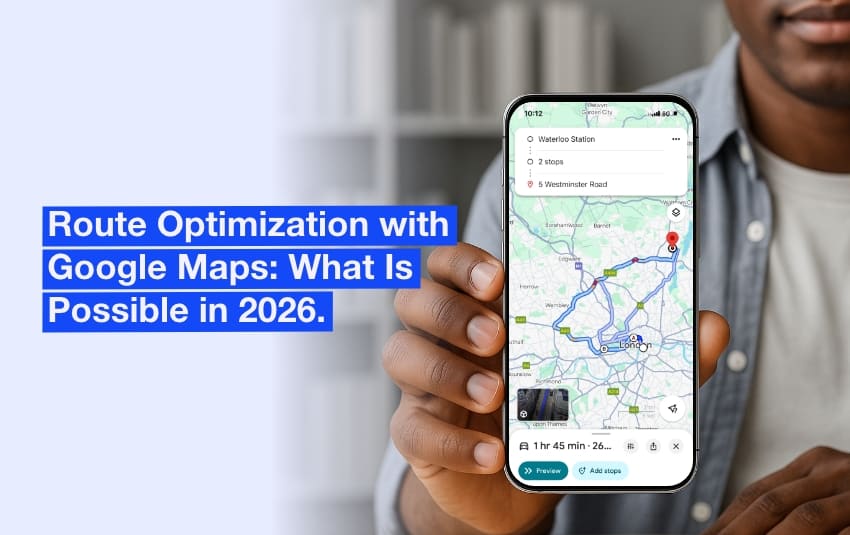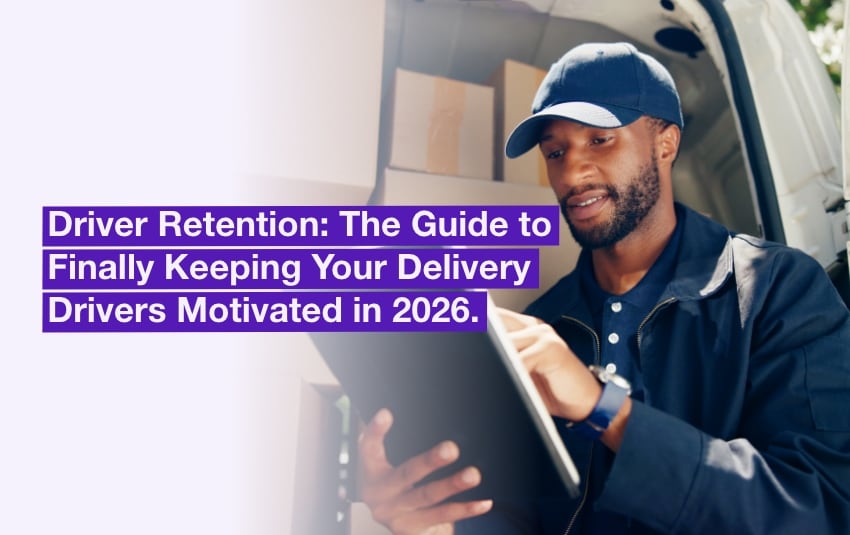The data for route optimisation: how to take advantage of it to achieve your objectives?

Blog > Field Service > The data for route optimisation: how to take advantage of it to achieve your objectives?
The data for route optimisation: how to take advantage of it to achieve your objectives?
Published on 11 February 2022 • Reading time: 7 min read

To help your company achieve the best performance, the route optimisation software, such as AntsRoute, gathers raw information, called data, and processes it through a series of pre-programmed calculations, known as algorithms.
Are you interested in understanding how this process works to efficiently use this data for your environmental or financial strategies? Let’s go, AntsRoute opens the bonnet!
Table of contents
- What data can be useful to optimise your routes?
- How can you make the most of this data to meet your strategic objectives?
The analysis of data is essential for efficient route optimisation. This enables the best routes to be planned, based on operational constraints and resources.
What data can be useful to optimise your routes?
The route optimisation software does not just schedule the different steps of the route to ensure that none are missed. This system goes beyond that! The mission of AntsRoute is rather to provide you with an optimal route scenario using artificial intelligence. In other words, the optimised route can be defined as the route that is closest to your objectives, while taking into account the operational constraints and resources.
First, it is essential to provide AntsRoute with the most accurate information possible, by entering the most relevant data about your industry. In concrete terms, here are the main categories of variables used by our software.
This includes all the information determining the identity or geographical location of the customer, as well as the constraints required by the customer, such as :
- The opening hours.
- The delivery address, encoded by our geographic information system.
- The preferred field workers, if the customer wants this or that employee as a first choice.
- The recurrence or frequency of visits or deliveries. For example, every Tuesday morning or 1 field service operation per month.
- The type of contract or service (standard, express, premium), etc.
Good to know! This data import can often be done automatically, thanks to the connections between AntsRoute and several CRMs or applications such as Hubspot, Shopify, Quickbooks, Google Sheets, etc.
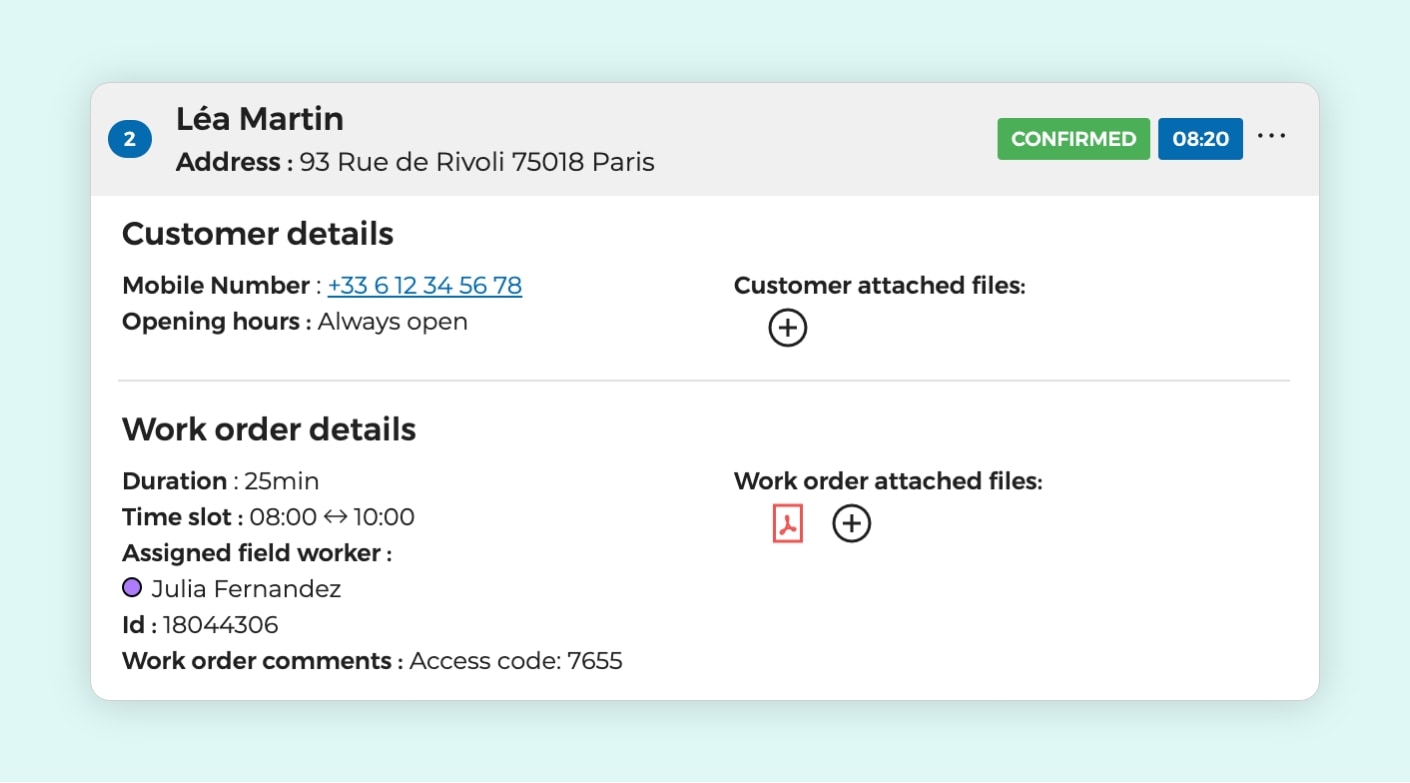
Details of a work order and a customer on AntsRoute.
In this category, we include all the settings that change with each visit. These may include, for example:
- The information about the size of the items to be shipped, in kilos, in m3, in number of packages or pallets.
- The type of goods to be delivered (fresh, frozen, dangerous, radioactive, etc.).
- The type of service to be carried out (breakdown service, preventive maintenance, etc.).
You can also choose to enter a deadline, if the field service must be carried out by a given day, or force an emergency delivery that must be completed regardless of the cost.
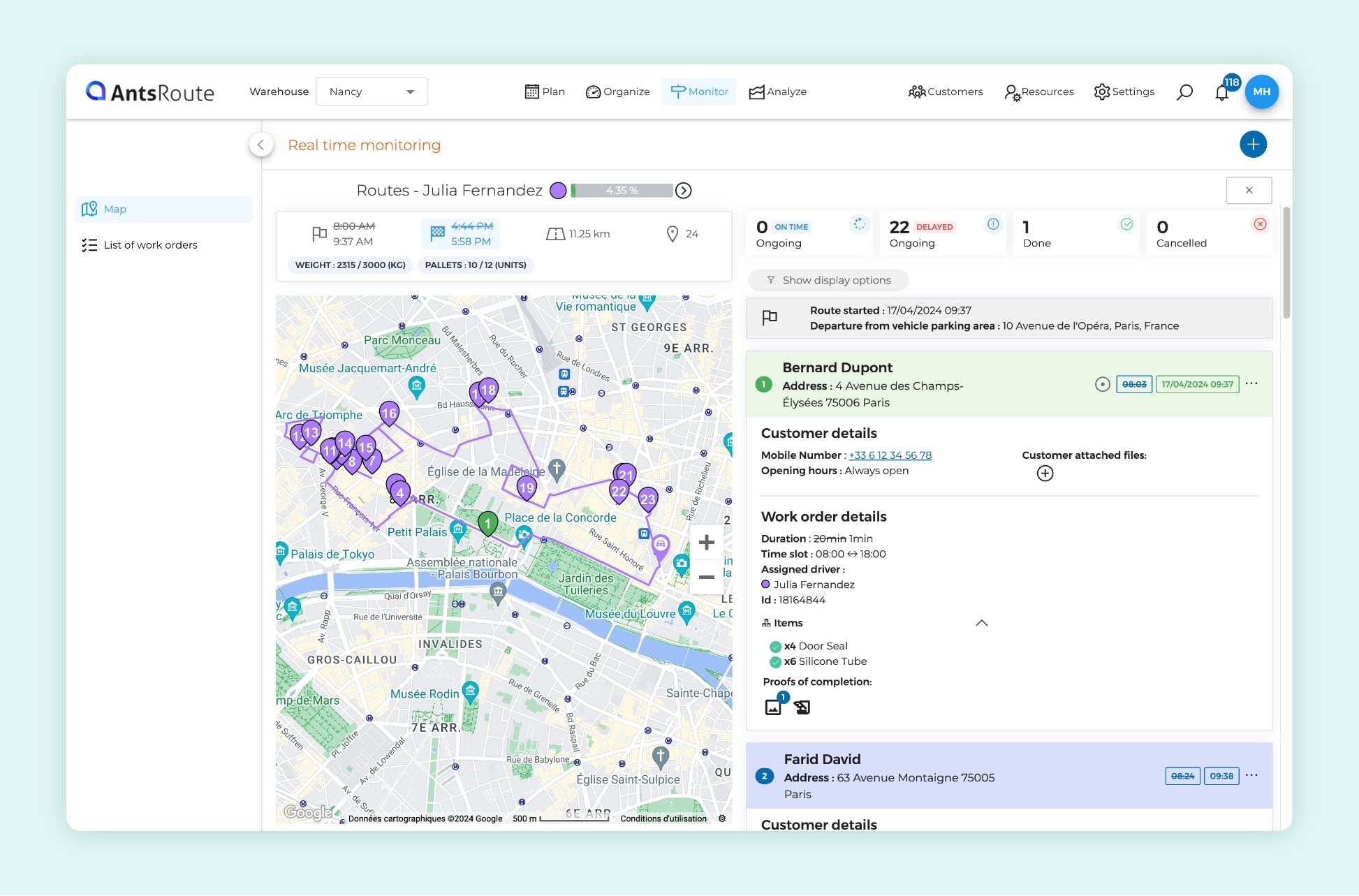
Managing data relating to goods on AntsRoute.
The information about delivery or field service vehicles
The expenses related to vehicles often account for the largest part of costs for companies using route management software. To achieve maximum savings, you can provide our system with a wide range of data on each vehicle in the fleet, such as:
- The type (bicycle, car, light commercial vehicle, refrigerated truck, etc.).
- The maximum loading capacity, in weight, volume, pallets, etc.
- The battery life.
- The average cost of use per kilometre.
- The CO2 emissions and the type of energy used (diesel, petrol, natural gas, etc.).
- The maintenance required, etc.
The AntsRoute software is designed to enable in-depth management of your teams, whether the objective is to build employee loyalty or to provide smart service to your customers. AntsRoute takes into account the following constraints:
- The working hours, breaks, holidays, etc.
- The average cost per hour of each worker.
- The skills (licences, accreditations, electrical qualifications, etc.).
- The geographical area assigned to each driver or technician, if the field service operations are sectorized.
In accordance with your wage or work welfare policy, you can choose to either strictly keep the end time of service to the set time slot, or to allow overtime.
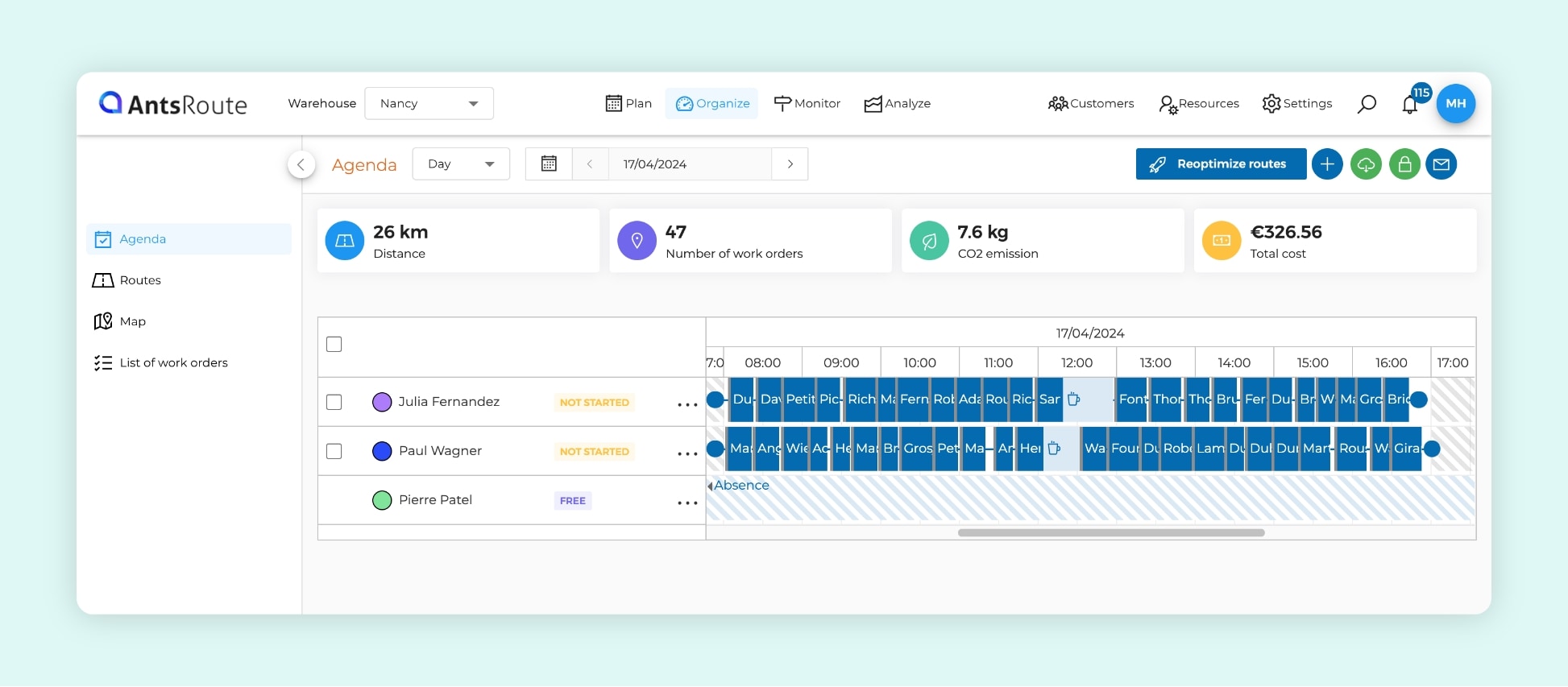
Field Service scheduling with management of technicians’ working hours on AntsRoute.
The information on the road network
Our customers are not the only ones who send information to the AntsRoute system. The navigation applications embedded in AntsRoute such as Google Maps or Waze also provide valuable data:
- The road works, diversions, traffic accidents.
- The occasional or recurrent traffic jams.
- The speed limits.
- The tolls.
- The sections of the network prohibited to some categories of vehicles, etc.
How can you make the most of this data to meet your strategic objectives?
Once these variables are set, our system computes them to make multiple calculations using algorithms. These algorithms, which are essential for understanding the route optimisation process, are defined as a series of instructions given to a computer until it reaches a result.
Although the algorithms used in AntsRoute are very sophisticated, the idea of algorithms should not impress you. A cooking recipe can also be considered as an algorithm. For example, there are many recipes for making a chocolate cake. Depending on the ingredients used and the instructions to follow, your cake will be more or less fluffy, light, sweet, etc. AntsRoute uses a similar process to “dose” and “mix” the steps of your route… although the calculations involved are obviously much more complex.
This carefully balanced cooking is what we call optimisation under constraints in our jargon.
Thanks to these many calculations, unmanageable for a human brain, AntsRoute determines one or more scenarios consistent with your objectives, whether financial, commercial or environmental. In some cases, the system determines perfectly optimised routes. Sometimes, the software lets you decide between 2 or 3 similar scenarios, based on the internal scoring system.
In concrete terms, here are 3 data-driven methods for designing optimal routes according to the objectives and business model of your company.
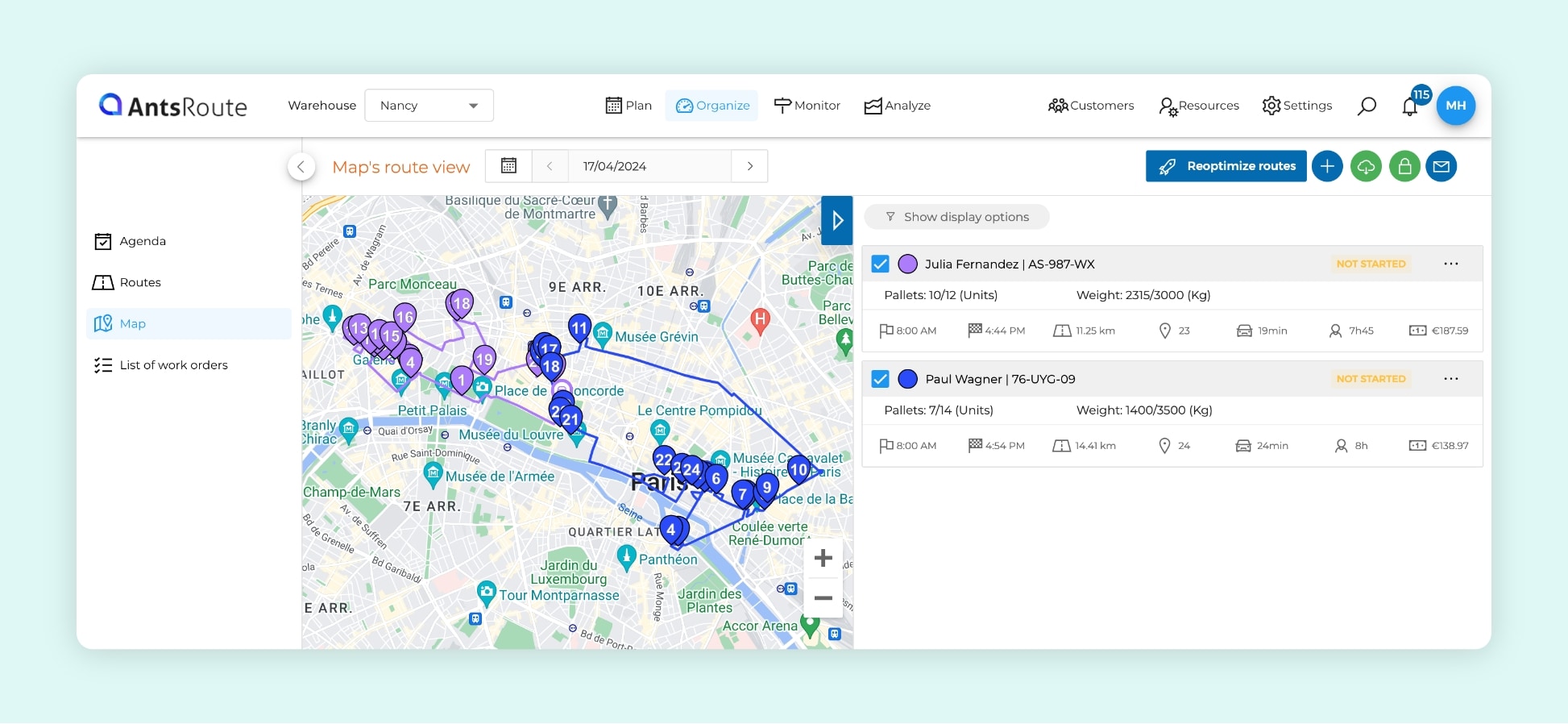
The optimisation of field service routes on AntsRoute.
Strategy no. 1: Optimise routes to maximise vehicle filling rate
This strategy concerns, for example, hauliers who work extensively with subcontractors, for regular customers or with contracts from freight exchanges. In this industry, where margins are very low, it is essential to optimise each trip to remain profitable.
AntsRoute offers several complementary features to maximise the loading rate of vehicles, while managing exceptions and specificities:
- Incompatible products, which cannot be transported together.
- Delivery deadlines.
- Statutory breaks and rest periods.
- Decision to avoid tolls or not.
- Skills and licences of each driver, etc.

The management of vehicle capacities on AntsRoute.
Strategy no. 2: Focus on the quality of customer service
In some cases, the rapid visit of a field worker can be critical. Some companies have implemented premium services, with a promise of a rapid response for customers who have subscribed to this option.
In this type of scenario, you can prioritize tasks by type of service. To meet your service commitments without sacrificing profitability, the system completes the routes of field workers with tasks from the basket, which are necessary, but less urgent: maintenance, overhaul, etc.
Strategy no. 3: Focus on reducing operational costs and carbon footprint
The best mile is the one you don’t drive. This maxim, inspired by the zero waste philosophy, inspired the development of many of our algorithms. For the remaining kilometres, those that still need to be driven, AntsRoute offers several possibilities to reduce the consumption of vehicles, and therefore your carbon footprint.
Thanks to the work of our developers, it’s possible to:
- Automatically re-optimise the remaining route if there is a cancellation or an extra step.
- Prioritise the use of the most environmentally friendly vehicles. For example, if the same task can be carried out with several vehicles, you can give priority to the least polluting.
- Calculate the routes for electric vehicles based on the presence of charging stations, etc.
Do you have specific questions for our team about the data used by our route optimisation software? Contact us.
Free 7-day trial | No credit card required
Contenu
- What data can be useful to optimise your routes?
- The data related to customers
- The data related to the goods or services
- The information about delivery or field service vehicles
- The data related to human resources management
- The information on the road network
- How can you make the most of this data to meet your strategic objectives?
- Strategy no. 1: Optimise routes to maximise vehicle filling rate
- Strategy no. 2: Focus on the quality of customer service
- Strategy no. 3: Focus on reducing operational costs and carbon footprint


